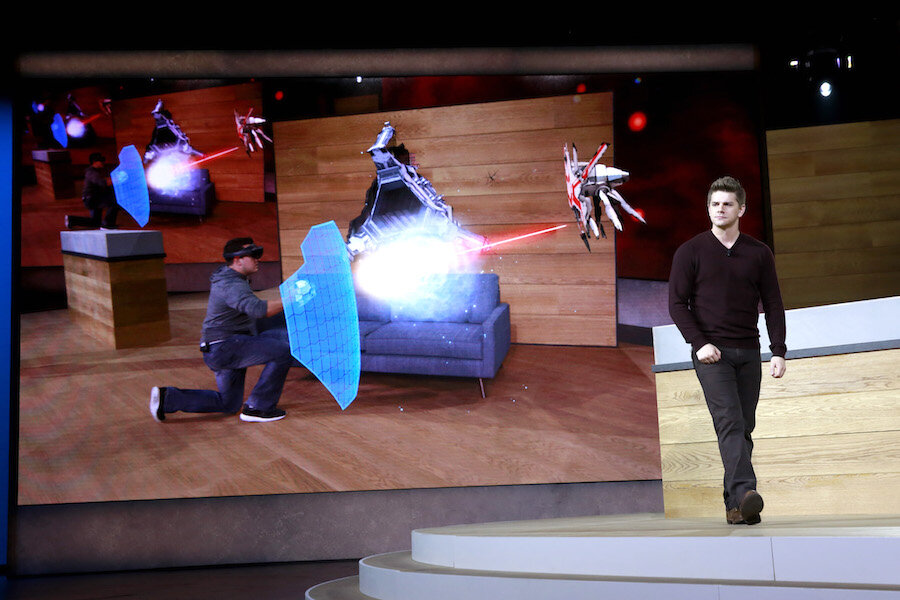Can Microsoft's new vision of augmented reality convince consumers?
Loading...
On Thursday, the audience of TED Conference 2016 got a sneak-peak of Microsoft’s vision for augmented reality.
Microsoft’s Alex Kipman walked on stage wearing an augmented reality headset. As a camera displayed the virtual changes to the audience, Mr. Kipman made it rain (virtually), created a fantasy-like garden environment around him, and “teleported” in a hologram of a NASA scientist to talk. Augmented reality works by superimposing digital imagery or sounds on views of the real world.
His point: "We're like cave people in computer terms. We've barely discovered charcoal and started drawing stick figures in our caves."
Microsoft is readying its augmented-reality (AR) device, the HoloLens, for the mass market. The tech behemoth has toted the headset as the next step of evolution for computing, capable of freeing humanity “from the two-dimensional confines of traditional computing.” But will consumers be ready for the new gadget?
"I think we're a good few years away from a compelling consumer AR smart glasses solution which has the desirable content and is cheap enough to drive a broader interest in the technology," said Piers Harding-Rolls, an analyst at research firm IHS, to the BBC.
"I see consumer AR as more embryonic than VR and still very much at an experimental stage ... most activity in AR at the moment is "business-focused using smart glasses for commercial applications," he added in the interview.
Past attempts by tech companies to bring the nascent technology to the mass market have not succeeded. One of the most notable devices was Google Glass, a headset some thought would be the hands-free successor to the smartphone.
Google's headset made waves with a spread in Time magazine and The New Yorker and had its own brief stint on the 2012 New York Fashion Week runway. However, it never made it past an initial early adopter program and plans to sell it were canceled in January 2015. The company is reportedly readying a successor, but it may not rely on a screen. Google also announced last week a new virtual reality headset that some speculate incorporates elements of AR.
The Microsoft HoloLens has been in development for years, but will begin shipping during the first quarter of 2016, according to Microsoft. The first phase of sales will likely be to developers, at $3,000 each, with no exact information on how much the consumer price will eventually be.
Currently the HoloLens is a large headset that sits over the eyes and wraps around the head. Kipman predicted that with time the HoloLens would be slimmed down to just a pair of glasses that could slip over peoples eyes.
"Being hunched over phones or computers is the wrong way," Meta chief executive Meron Gribetz said to Phys.org. "In the next few years, humanity is going to go through a shift. We are going to start putting a layer of information over the world.






